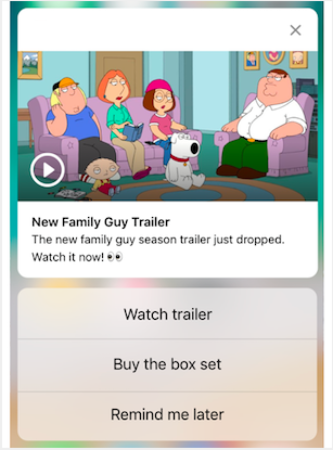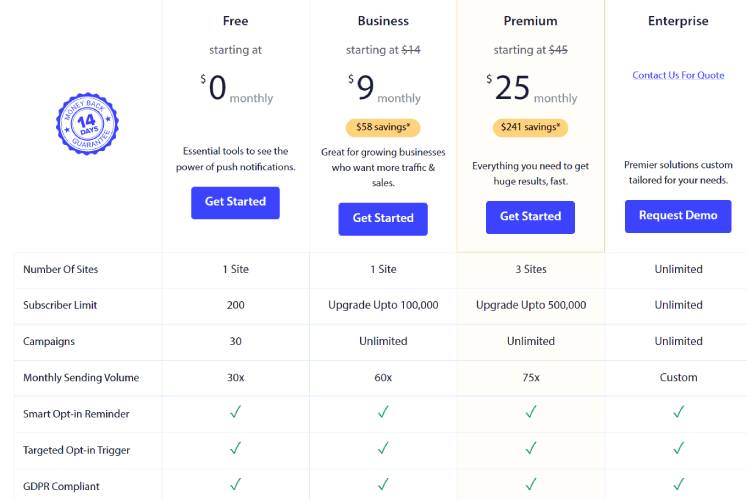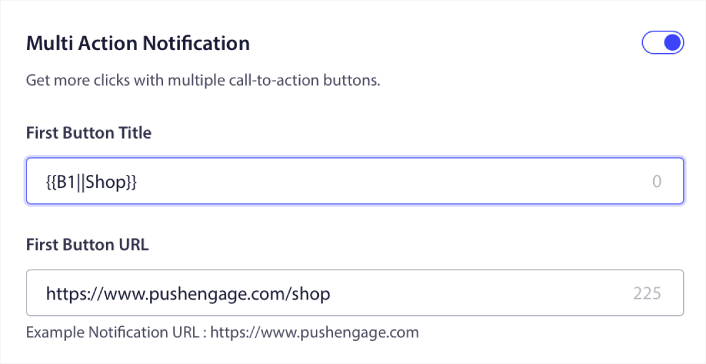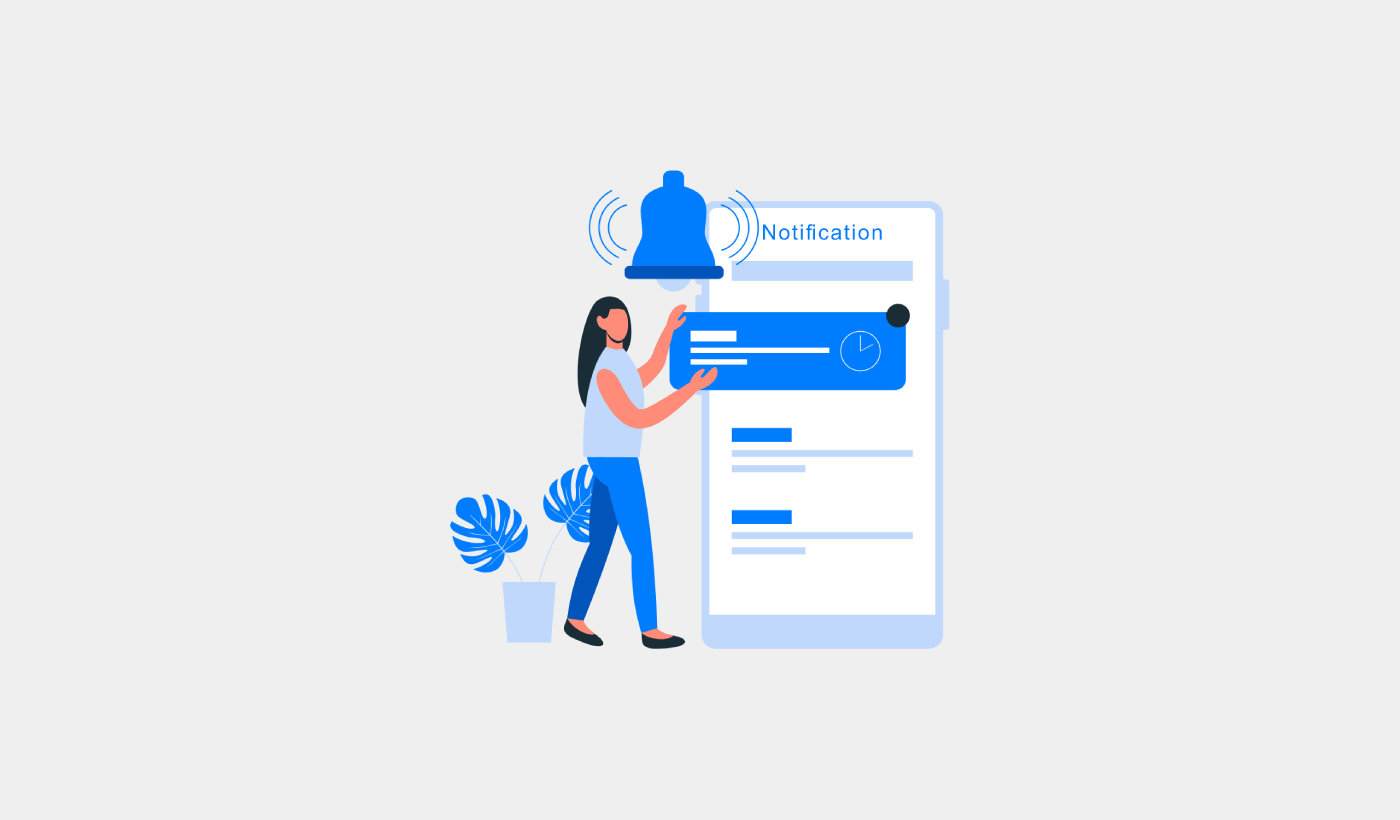Push vs in app notifications: Which one is more effective for your small business?
The answer is: There is no simple answer! It all depends on what kind of business you’re running, where you’re located in the world, how broad your business is, what you want to communicate to your audience, and who your audience is.
And that’s a LOT to consider.
But there will be a definitive answer for your business depending on what you’re looking to get out of your marketing campaigns. That’s why we went ahead and created this article for you where we compare push vs in app notifications.
In this article, we’ll compare:
Sounds good? Let’s dive right in.
Difference in Media Types for Push vs In App Notifications
Push notifications are messages that pop up on your device, like on your phone’s home screen or in the notification tray. In-app notifications are messages that you see within the app itself, usually at the top or bottom of the screen.
For web and app push notifications:
- The media types are typically limited to text and simple graphics/icons.
- Push notifications don’t always support rich media like images, videos, or interactive content across all browsers and devices.
- The goal is to keep push notifications concise and lightweight so they can be delivered quickly to your device.

For in-app push notifications:
- In-app notifications have more flexibility in the media types that can be used.
- In addition to text, in-app notifications can include images, GIFs, videos, and even interactive elements.
- The goal is to be more visually engaging and provide more detailed information without interrupting the user as much as a push notification would.

Can you see the difference between the two messages? With an in-app push notification campaign, you have a lot of space to explore creative ideas and communicate way more effectively.
The key difference is that push notifications prioritize simplicity and speed of delivery, while in-app notifications can leverage richer media to convey more complex information within the app itself.
Web and app push notifications are great for alerting you about important updates, like a breaking news story or a message from a friend. But in-app push notifications are more useful for things like showing you new content or features available in the app.
Cost of Push vs In App Push Notifications
Push notification pricing is way more reasonable than SMS notifications or email notifications. This is especially true for international customers and in bulk rates. But what about push vs in app notifications?
Implementing in-app notifications is generally more cost-effective than using push notifications. Many app development platforms and frameworks include basic in-app notification functionality at no additional charge. The costs are often bundled into the overall app development and hosting fees, rather than a separate per-notification cost.
Advanced in-app notification features, like rich media support or sophisticated targeting, may cost extra. But in general, in-app notifications have a lower per-use cost compared to push notifications.
On the other hand, push notifications are priced at a pay per use model that scales with the volume of notifications sent. Take a look at PushEngage’s pricing:

PushEngage is the #1 push notifications plugin in the world. If you compare it to the other best push notification services, you’ll see that it clearly comes out on top.
Push notifications help you grow your website traffic and engagement on autopilot. And if you’re running an online store, PushEngage also helps you grow your sales by helping you create automated eCommerce push notifications.
You can get started for free, but if you’re serious about growing your business, you should buy a paid plan. Also, before buying any push notification service, you should check out this guide to push notification costs.
Here’s a quick glance at what you get with PushEngage:
- High-converting automated campaigns
- Multiple targeting and campaign scheduling options
- Goal tracking and advanced analytics
- Intelligent A/B testing
- A Dedicated Success Manager
You’ll see that PushEngage is hands down the best bet if you want to build traffic, engagement, and sales for your business. And if you’re on a budget, you can always get a little bit creative with your push notifications.
With PushEngage, you can send web push notifications, app push notifications, and web app push notifications.
Push vs In App Notifications: What’s Easier to Personalize?
The cool thing about both push notifications and in app campaigns is that they can be automated and personalized. But when it comes to personalizing push vs in-app notifications, in-app notifications generally offer more flexibility and customization options.
Personalizing push notifications is typically restricted to basic elements like the message text, subject line, and small icons or graphics. Customizing the formatting, layout, and rich media content of push notifications is more challenging.

The push notification channels provided by platforms like Apple and Google have guidelines and restrictions on the types of personalization allowed.
In-app notifications provide much more robust personalization options.
Within the app’s interface, in-app notifications can be tailored with custom designs, layouts, fonts, colors, and interactive elements. Rich media like images, videos, and GIFs can be included to make the notifications more visually engaging and personalized.
Developers have greater control over the appearance and behavior of in-app notifications compared to the limited options for push notifications. The bottomline is that in-app notifications allow for a higher degree of personalization and customization.
What Automation Workflows Should You Use?
Now that you know that push notifications and in app notifications are sent on different occasions, you need to understand that automation works differently for them.
We don’t mean that the campaigns you get are different. In both channels, you can set up similar campaigns such as:
- Triggered notifications
- Drip autoresponders
- Cart abandonment notifications
- Inventory alerts
- Price drop notifications
- Scheduled and repeat notifications
- Personalized wishes and reminders
But the type of automation you would create is vastly different. For instance, if you’re running a weekly sale you should use scheduled push notifications. But if you’re sending a link to a new product in your catalog, an in app notification works better.
In the same way, for an imminent natural disaster, send a push notification instead.

Real talk: Just because you get the same automation tools for both in app notifications and push notification campaigns doesn’t mean that they’re equally effective. Mix and match both channels to make the most of both marketing channels.
What to Do With This Push vs In App Notifications Comparison?
That’s all for this one, folks!
Push notifications are a great way to increase traffic, engagement, and sales for any business. On the whole, they’re way more powerful and affordable than SMS notifications. And if you’re starting out with push notifications, we recommend using PushEngage. PushEngage is the #1 push notification software in the market.
And the best part is that PushEngage empowers small businesses to compete with big brands. So, it’s a good fit at every stage of growth whether you’re looking to start, grow, or scale your business.
If you’re just getting started with push notifications, you should also check out some of these articles:
- 7 Smart Strategies to Boost Customer Engagement
- How to Get More Traffic to Your WordPress Blog (9 Easy Ways)
- How to Boost Your Web Push Notification Opt-In Rate (7 Ways)
- How to Use Retargeting Push Notifications to 2x Your Revenue
- How to Sort Your Push Notifications and Find Winning Campaigns
- How to Clean Up Push Notifications Subscriber Lists (Easy)
- How to Automatically Send RSS Push Notifications
And if you haven’t already, get started with PushEngage today to get to the next level!
